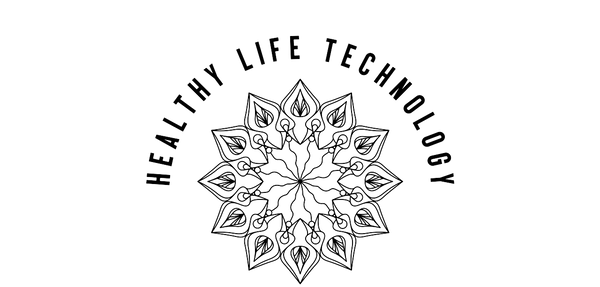In recent years, the concept of quantum healing has emerged as a promising alternative in the realm of wellness. This approach, rooted in quantum physics, posits that healing can occur at the subatomic level, promoting balance and harmony within the body and mind. In this blog, we’ll explore the principles of quantum healing, its potential benefits, and how it could shape the future of health and wellness.
Understanding the Basics of Quantum Healing
Quantum healing is based on the principles of quantum physics, which studies the smallest particles that make up the universe. This approach suggests that by influencing these particles, we can potentially bring about healing on a deeper, energetic level. But what exactly does that mean for our health and wellness?
To grasp the essence of quantum healing, we must first comprehend the notion of quantum entanglement. This phenomenon implies that particles can become interconnected in such a way that the state of one immediately influences the state of another, regardless of the distance between them. For healing, this means that the energies within our own bodies might be intricately linked with surrounding environmental energies, creating a networked system of healing potential.
The foundation of quantum healing also lies in the famous “observer effect” of quantum physics, which suggests that the act of observation itself can alter the state of a quantum system. This idea posits that by actively focusing our consciousness on certain outcomes, we could potentially influence the healing processes within our bodies. It’s an intriguing blend of ancient wisdom and modern science that invites us to rethink how we perceive our health.
The Science Behind Quantum Healing
At the core of quantum healing lies the theory that our bodies are interconnected with everything in the universe at a quantum level. This perspective sees health as a state of balance and any disruptions as opportunities for intervention through energetic or consciousness-driven methods.
Research into quantum biology offers exciting insights into how these principles could be applied to enhance wellness. Quantum entanglement and superposition might offer explanations for phenomena such as body heat regulation and enzyme activity, opening doors to innovative therapeutic approaches. Although still emerging, these studies are beginning to lend some scientific backing to the potential mechanisms involved in quantum healing applications.
Moreover, the resonance theory of consciousness proposes that consciousness itself might arise from the quantum interactions within the brain. This suggests that the mind could be a powerful tool in influencing the quantum shifts necessary for healing. Understanding and harnessing this power could lead to profound advances in how we approach both the prevention and treatment of disease.
Potential Benefits of Quantum Healing
Proponents of quantum healing believe it can lead to improvements in physical health, emotional well-being, and mental clarity. While scientific evidence is still emerging, anecdotal reports suggest benefits such as reduced stress, pain relief, and enhanced recovery.
In practice, quantum healing often seeks to address the root causes of health issues rather than just alleviating symptoms. By aligning the body’s energetic fields, practitioners claim that the self-healing capacities of the body are activated. This could potentially result in a more profound and permanent state of wellness rather than temporary relief. Additionally, quantum healing practices may empower individuals to actively participate in their own healing processes, fostering a sense of empowerment and self-awareness.
Another compelling aspect of quantum healing is its potential for emotional and psychological transformation. By working with the subconscious mind through techniques like visualization, individuals can release emotional blockages that might be hindering their path to wellness. Such practices have been reported to enhance resilience, improve emotional balance, and even lead to spiritual insights, making it a holistic approach to mind-body wellness.
How Quantum Healing is Practiced
Quantum healing can encompass various techniques, including meditation, visualization, and energy healing practices like Reiki. Practitioners aim to tap into the quantum field to promote healing and wellness, often by guiding patients to focus their thoughts and intentions on desired outcomes.
During a typical quantum healing session, practitioners might begin by creating a serene and calming environment, facilitating a receptive state in their clients. Techniques such as guided imagery or sound therapy could be employed to assist clients in entering a meditative state, allowing them to access the desired vibrational frequencies for healing.
Visualization exercises are commonly used in quantum healing practices. These exercises encourage individuals to envision their desired state of being, promoting a positive feedback loop between thoughts and body. This technique stems from the belief that the energy body reflects mental and emotional states and that conscious intention can bring about tangible changes in physical health.
Criticisms and Challenges in Quantum Healing
Despite its appeal, quantum healing is not without its skeptics. Critics argue that the practice lacks empirical evidence and can be overly reliant on pseudoscience. However, ongoing research and growing interest suggest a potential shift in mainstream attitudes towards this unconventional method.
Skeptics often point to the need for robust, peer-reviewed studies to substantiate the claims associated with quantum healing. There is a call for rigorous experimentation to distinguish between genuine therapeutic effects and placebo phenomena, as this would lend credibility and transparency to the practice. Furthermore, there are concerns regarding the commodification of quantum healing practices and the potential for exploitation if not regulated properly.
Moreover, the challenge remains in integrating quantum healing with conventional medical practices. There is a need for collaboration between different health sectors to explore how traditional and quantum healing can coexist and complement one another. This endeavor requires an open-minded dialogue between practitioners, researchers, and regulatory bodies to ensure safety, efficacy, and ethical standards.
The Future of Wellness: Integrating Quantum Healing
As our understanding of quantum physics deepens, so too does our curiosity about its applications in healing. The future of wellness may well include quantum healing as part of a broader, integrative approach, blending traditional medical practices with advanced quantum techniques to achieve optimal health outcomes.
Healthcare facilities that incorporate quantum healing techniques alongside conventional treatments are starting to emerge, offering patients a more comprehensive healing experience. These integrative practices are designed to treat the whole person, addressing physical, mental, and energetic aspects of health, and could revolutionize our approach to healthcare.
In the future, quantum healing might play a crucial role in personalized medicine. By tailoring treatments to the energetic signatures of individuals, practitioners may be able to offer more effective and customized healing modalities. As technology advances, the possibilities for real-time monitoring of energy fields and their interaction with biological systems become increasingly viable, offering us deeper insights into the mechanisms of health and sickness.
Embracing the Quantum Frontier
As we continue to explore the universe at both its vast and minute scales, quantum healing presents an intriguing possibility for the future of wellness. By embracing the connections between physics and biology, we may unlock new ways to promote health and healing. Whether you’re new to the concept or already a believer, quantum healing invites us all to think beyond traditional boundaries and imagine a future where wellness is a truly holistic experience.


